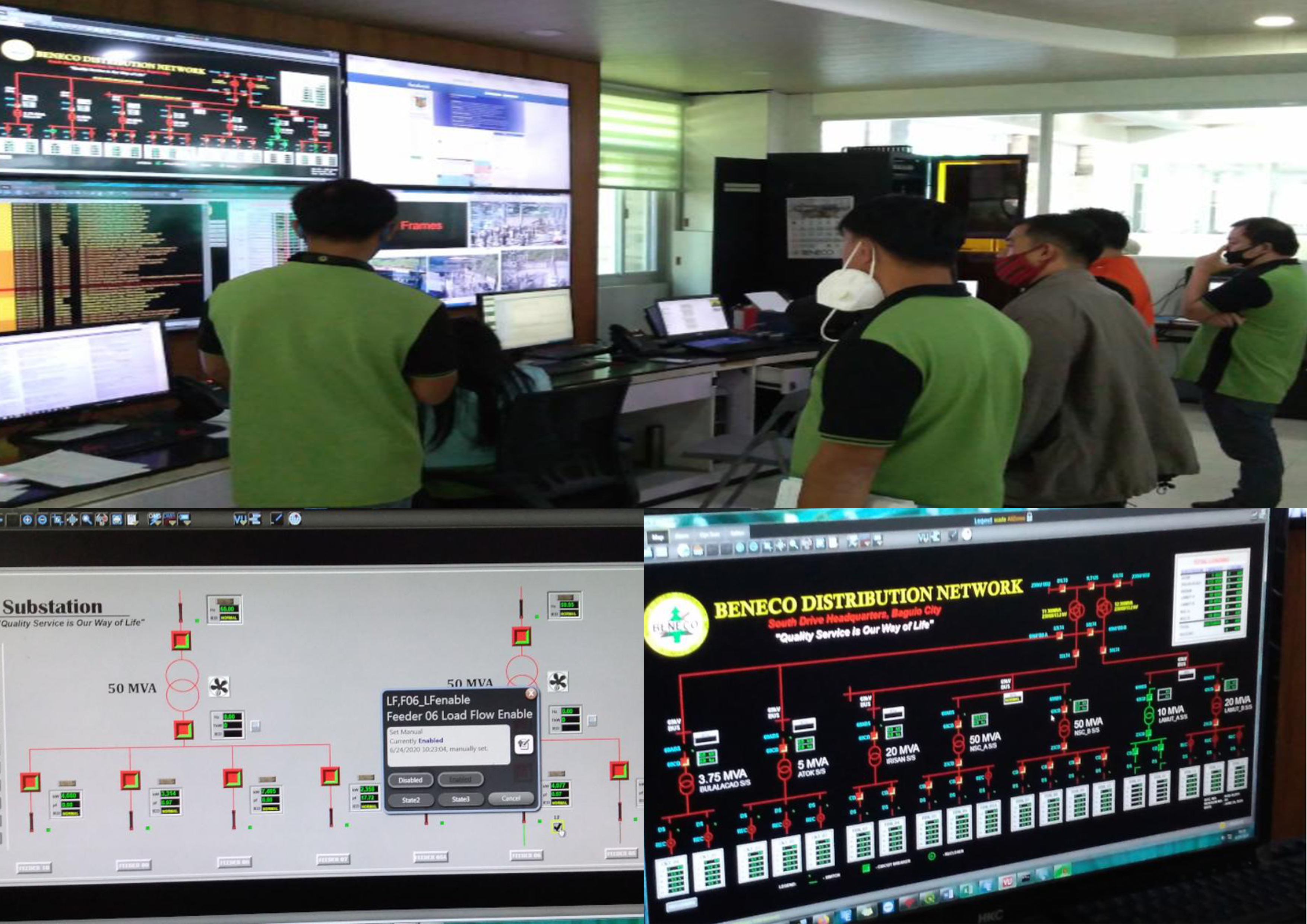

BENECO and technology
BENECO always strives to incorporate technology to its daily operations since we believe this will allow us to continually improve our services and save money in the long term. SCADA has been one of the first systems we identified as crucial to the electric cooperative.
SCADA refers to System Control and Data Acquisition, a technology that allows our engineers to monitor in real-time the situation of our substations and the conditions of our reclosers, thus eliminating the need to travel to and from a remote site just to assess the health of our equipment and to energize an area in case of power outage.
Last week, our SCADA engineers upgraded our SCADA system to a newer, feature-full version which has an integrated Load Flow and Short-Circuit Analysis functions. These functions supply the module for load flow analysis which would enable our engineers to determine if the supply of electricity in one feeder can be diverted to another feeder without overloading the power transformer.
The diversion is necessary to supply electricity to a feeder that that suddenly suffered an unscheduled power interruption. from was earlier scheduled to be under power interruption for a long period of time which would benefit our member-consumer-owners (MCOs) in cases of unscheduled interruptions.
Say an incident of bumped pole happened along Naguilian road, Baguio City. The estimated repair time would be eight hours which would surely inconvenience our consumers. Often, our engineers would need about an hour or so of load flow analysis to determine if the feeder supplying power to the Dominican-Mirador barangay could be diverted to the feeder that was interrupted when the pole was bumped in Naguilian road. That's quite a period to contend with since the interruption was unscheduled. Using the Load Flow and Short-Circuit Analysis, an updated version, our engineers will be able to give recommendations within minutes.
The same goes for the short-circuit analysis module. Before, unscheduled interruptions would require an engineer to go through the historical records before they could pinpoint the possible location of fault or short-circuit. Now, the task becomes easier and faster since the newly incorporated version of the SCADA could readily assist the engineer to find the location of the fault handily using the data processed by the software.
Other system modules are also in the works for future integration into our SCADA. Pretty soon, possible fault locations could be placed as an overlay on Google maps instead of displaying an unassuming text into our screen. These technical beeps could be hopefully within the grasp by our MCOs in the next three years. It would be thrilling for our MCOs to be able to view what our engineers can watch from the SCADA room.
Our motivation to continuously enhance our systems is to better serve our MCOs. Technology promises a lot of enhancement for our systems. It's a way to go for the EC itself and our MCOs whose welfare is our top priority.
4 South Drive
Baguio City 2600